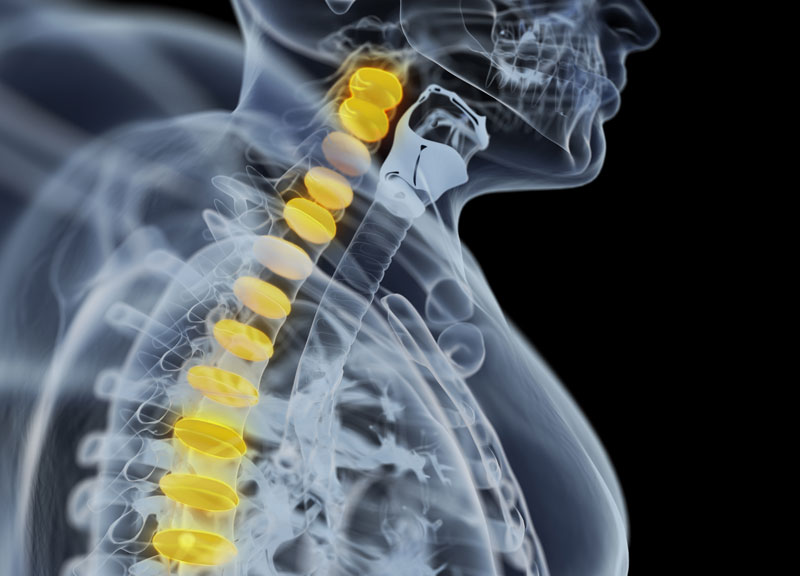What is Hydrocephalus?
Hydrocephalus may be defined as the buildup of fluid in the ventricles (cavities) deep within the brain. In the event of excess fluid getting into the ventricles, the size of ventricles and exerts excess pressure on the brain.
Usually, cerebrospinal fluid flows through the ventricles. It bathes the brain and spinal column. However, excess fluid can exert pressure resulting in hydrocephalus that may damage brain tissues. A variety of impairments in brain function may also occur. It is possible that hydrocephalus may occur at any age. However, the condition is more common among infants and older adults.
It is possible that surgical treatment for hydrocephalus may restore and maintain normal cerebrospinal fluid levels in the brain. A huge variety of interventions are also needed to manage symptoms or functional impairments resulting from hydrocephalus.
Signs and Symptoms
These may vary, generally by age of onset.
Infants – Some of the most common signs and symptoms of hydrocephalus in infants include:
- Unusually large head
- Changes in the head
- Rapid increase in the size of the head
- Fontanel (a bulging or tense soft spot) on the top of the head
Physical Symptoms of the Condition
- Vomiting
- Poor feeding
- Seizures
- Sleepiness
- Irritability
- Eyes fixed downward (sensation of the eyes)
- Deficits in muscle tone and strength
- No responsiveness to touch
- Issues with expected growth
Symptoms in Toddlers and Older Children
The following signs and symptoms may be experienced by toddlers and older children:
Physical Symptoms – Headache, abnormal enlargement of a toddler’s head, blurred or double vision, sleepiness, difficulty remaining awake or waking up, unstable balance, nausea, vomiting, poor appetite, poor coordination, seizures.
Behavioral and cognitive changes – Irritability, issues with attention, visible change in personality, decline in school performance, any delay or issues with previously acquired skills, such as talking / walking.
Symptoms in Young and Middle-aged Adults
- Headache
- Problems in remaining awake or waking up
- Loss of coordination or balance
- Impaired vision
- Loss of bladder control or a frequent urge to urinate
- Decline in memory
- Decline in concentration and other thinking skills affecting job performance
Symptoms in Older Adults
Individuals over 60 years of age and older may experience the following signs and symptoms of hydrocephalus:
- Loss of bladder control
- Frequent urge to urinate
- Loss of memory loss
- Progressive loss of thinking or reasoning skills
- Difficulty walking, experienced as shuffling gait or the feeling of the feet being stuck
- Poor balance or coordination
- Movements that are slower than normal
Seeking Medical Attention
It is crucial to seek emergency medical care for infants and toddlers who have been experiencing the following signs and symptoms:
- Seizures
- High-pitched cry
- Problems with feeding / sucking
- Unexplained, recurrent vomiting
- An unwillingness to bend
- Child not willing to move the neck or head
- Breathing difficulties
Timely diagnosis and appropriate care is important for treatment.
Causes of Hydrocephalus
The major cause of hydrocephalus is known to be an imbalance between the amount of cerebrospinal fluid production and its absorption into the bloodstream. The tissues lining the brain ventricles produce cerebrospinal fluid. It flows through these ventricles through interconnecting channels and eventually flows into the spaces surrounding around the spinal column and brain. This fluid gets absorbed mainly by blood vessels in tissues adjacent to the base of the brain.
Cerebrospinal fluid has a crucial role to play in brain function. It conducts the following functions:
- Ensures buoyancy of the brain to facilitate heavy brain float within the skull.
- Provides cushioning to brain and prevents injury.
- Eliminates waste products of the brain’s metabolism.
- Flows back and forth between spinal column and the brain cavity for maintenance of a constant pressure within the brain. This is important for compensating for blood pressure changes in the brain.
The reasons behind excess cerebrospinal fluid in the ventricles may include any one of the reasons:
Obstruction – This is known to be the most common issue. A partial obstruction to normal cerebrospinal fluid flow from either ventricles to other spaces around the brain or one ventricle to another.
Poor Absorption – Issues associated with mechanisms enabling the absorption of cerebral spinal fluid from blood vessels. This is usually associated with inflammation of brain tissues resulting from a disease or injury.
Overproduction – This is a rare cause. The mechanisms related to production of cerebrospinal fluid tend to create more than normal and more quickly than it can be absorbed.
Risk Factors for Hydrocephalus
This is a little tricky because in most cases, doctors may be unable to tell the leading cause of hydrocephalus. But some developmental or medical issues are known to contribute to or trigger this condition.
Risk Factors for Newborns – Congenital Hydrocephalus (present at birth) or shortly after birth may occur due to any of the following issues:
1. Abnormal development of the central nervous system which interferes with the cerebral spinal fluid flow.
2. Bleeding within the ventricles is a complication associated with premature birth.
3. Uterus infection during a pregnancy, such as syphilis, rubella etc. that results in inflammation in brain tissues of the fetus.
Other Contributing Factors
Other risk factors of hydrocephalus among any age group includes:
– Spinal cord / brain lesions or tumors
– Infections of central nervous system, such as mumps or bacterial meningitis
– Bleeding in the brain due to a head injury or stroke
– Any other type of traumatic brain injury
Complications of Hydrophalus
Long-term complications of the condition may vary widely. Also, these are tough to predict. In case, the condition has progressed during the time of birth, it can result in the following problems:
- Intellectual disabilities
- Developmental issues
- Physical disabilities
In most of the less severe cases, appropriate and timely treatment will have fewer complications (if any). Adults suffering a significant decline in memory or any other thinking skills will usually have poorer recovery rates. They may also have to face problems with persistent symptoms post hydrocephalus treatment.
The severity of complications will depend on the following factors:
- Underlying medical issues
- Developmental problems
- Severity of initial symptoms
- Diagnosis and treatment time (how quick was the process undertaken)
Appointment with Doctor – How to Prepare
Making out if your child has hydrocephalus may depend on the severity of symptoms. Also the severity level should be understood at initial stages (when problems first appear). You need to know if there were any significant risk factors during the pregnancy or delivery. The doctor may be able to diagnose hydrophalus prior to birth or at the time of birth in some cases.
Well-baby Visits
It is crucial that you take your child to well-baby visits as per the schedule. The doctor will be able to monitor the development of children in the following key areas during these visits:
- Size of head
- Head growth rate
- Overall body growth rate of child
- Strength of muscle and tone
- Posture
- Coordination
- Motor skills as per the age of the child
- Sensory abilities of child, including hearing, vision, and touch
You need to be prepared to answer a few questions during regular checkups. These may include:
- Your concerns about overall growth or development of child.
- Does your child eat well?
- Different ways in which your child responds to touch.
- Developmental milestones of your child such as pushing up, rolling over, sitting up, walking, crawling, or speaking.
Visits to Doctor – Preparation
In case, you wish to see a doctor due to the recent onset of symptoms, it is best to fix an appointment with a general practitioner or your child’s pediatrician. Post initial evaluation session, your doctor may refer you to a specialist in the field of diagnosis and treatment of conditions that affect the brain and nervous system (neurologist).
You must be prepared to answer the following questions related to your / your child’s symptoms:
- Signs or symptoms you have observed.
- The onset of signs or symptoms (time and trigger).
- Any changes in these signs or symptoms over time.
- Any vision problems in childhood.
- Whether the signs or symptoms include nausea or vomiting.
- Any new medication that your child recently begun.
- Fever or headache experienced by the child.
- Any significant changes in personality, such as increased irritability.
- Any changes in school performance.
- Notable problems with movement or coordination.
- Signs or symptoms such as lack of energy or abnormal sleepiness.
- Signs and symptoms that include seizures in infants.
- Problems with eating or breathing in infants.
- Any on-going treatment for any other medical conditions (you and your child).
- Headache as one of the signs and symptoms in older children and adults.
- Signs and symptoms, including urinary incontinence in older children and adults.
- Recent head injury suffered by the child.
Tests and diagnosis
The diagnosis process for hydrocephalus is usually based on the following:
- Patient’s answers to the questions about doctor related to signs and symptoms
- A general physical exam
- Brain imaging tests
- A neurological exam
General Physical Exam
The doctor will examine and enquire about the medical history of the patient
Brain Imaging Tests
These tests are very effective in displaying ventricle enlargement caused due to excess cerebrospinal fluid. Doctors may also undertake these tests to identify underlying causes of hydrocephalus. It helps determine other conditions that contribute to the symptoms. Common imaging tests prescribed for hydrocephalus may include:
Computerized Tomography (CT) Scan – The test is a specialized X-ray technology that work towards producing clear cross-sectional views of the brain. The scanning is painless. The Patient will be free within 20 minutes. Since the test demands patient lying still, a child may be given a mild sedative. Most CT scans for hydrocephalus are usually conducted as emergency exams.
Ultrasound Imaging – The imaging test produces images via using high-frequency sound waves. Since the test is very simple and low risk process, doctors often recommend this for infants as a part of the initial assessment. The process involves placing of ultrasound device over the soft spot (fontanel) on the top of baby’s head. Ultrasound is also useful in detecting hydrocephalus prior to birth, especially when used during routine prenatal examinations.
Magnetic resonance imaging (MRI) – The painless test produces detailed 3-D or cross-sectional images of the brain by using radio waves and magnetic fields. The test may be noisy and requires patient lying still. Hence, children will be given a mild sedation. Some MRI scans can take up to an hour. Use of advanced and quicker version of MRI will take just five minutes without any need for sedation.
Neurological Exam
The neurological exams conducted will depend on the age of the individual. The neurologist may also ask certain questions and conduct simple tests to judge the following:
Muscle Condition – The doctor will assess muscle reflexes, tone and overall strength.
Sensory Condition – The doctor will test the patient for sense of touch, vision and eye movement, and hearing sensation.
Movement Status – It is important for the doctor to assess patient’s coordination and balance ability.
Psychiatric Condition – The patient’s mental status and mood are assessed.
Treatment Options and Drugs
Any one of the following two surgical treatments may be recommended to treat hydrocephalus as per the condition and severity of symptoms in patients:
Shunt
Shunt, a process involving insertion of drainage system surgically is the most common treatment process for hydrocephalus. The system comprises of a long, flexible tube combined with a valve. It helps fluid from the brain flowing in the right direction at the proper rate.
One of the tube’s end is placed in one of the ventricles of the brain. Thereafter, the tubing is tunnelled under the skin to a different part of the body (a chamber in the heart or abdomen). This is the site where excess cerebrospinal fluid can be absorbed easily.
Usually this shunt is required by those with hydrocephalus for the rest of their lives. They also require monitoring on a regular basis.
Endoscopic Third Ventriculostomy
This surgical procedure may be used for some patients as per the requirements. The surgeon will use a small video camera to get clear and direct vision of the interior of the brain. The surgeon will create a hole in one of the following to allow cerebrospinal fluid flow out of the brain:
The bottom of one of the ventricles
Or
Between the ventricles
Surgery – The Complications Involved
Both types of surgical procedures may result in complications.
Stunt Related Complications – It is possible that shunt systems cease cerebrospinal fluid draining. It may even cause poor regulation of drainage owing to certain types of blockage, mechanical errors, or infections.
Ventriculostomy Complications – These may show up as infections and bleeding.
It is important to understand that failure of surgery demands immediate medical attention. The doctors may also suggest surgical revisions and/or other interventions as per the severity of complications. Here is a list of signs and symptoms that suggest complications arising from surgery:
- Fever
- Irritability
- Drowsiness
- Nausea or vomiting
- Headache
- Problems with vision
- Redness of skin
- Pain or tenderness of the skin along the path of the shunt tube
- Abdominal pain while the shunt valve is still present in the abdomen
- Recurrence of initial hydrocephalus symptoms
Other Treatment Options
Children – Requirement for additional treatment will depend on the severity of hydrocephalus complications (long-term). A special care team is appointed for the children. This team comprises of:
- Physiatrist / Pediatrician – Takes care of the treatment plan and medical care procedure.
- Pediatric Neurologist – The medical professional specializes in the diagnosis and treatment of all neurological disorders in children.
- Occupational Therapist – Holds specializing in therapy for development of daily skills.
- Developmental Therapist – The professional holds specializes in therapy to assist your child develop age-appropriate behaviors, social skills and interpersonal skills.
- Mental Health Provider – Psychologist / psychiatrist provide these services.
- Social Worker – Helps family members access services and planning for all transitions in care.
- Teacher for Special Education – Teacher responsible for addressing all learning disabilities, determines precise educational requirements and appropriate educational resources.
Adults – Individuals with severe complications also need services of professionals from diverse fields including:
- Occupational therapists
- Social workers
- Specialists in dementia care
- Medical specialists dealing with other specialities
Coping with the Condition
Special rehabilitative therapies and educational interventions help patients live with fewer limitations. Luckily, there are a number of reputed resources available to provide both medical and emotional support to cope with hydrocephalus. Children suffering from developmental issues as a result of hydrocephalus may be eligible for health care programs sponsored by government and various support services.
For more information on this, check with social services agencies of your state. Many hospitals and voluntary organizations give support to people with disabilities.
Prevention for Hydrocephalus
Unfortunately, hydrocephalus is not a preventable condition. However, following certain rules can definitely help reduce the risk of the condition:
Pregnancy Care – Make sure you get regular prenatal care during pregnancy. It is important that you follow recommended schedule of the doctor for checkups. This will reduce premature labor risk significantly. A premature delivery places baby at higher risk of developing hydrocephalus and various other complications.
Vaccination and Screening – It is important that you get protection against infectious illness. So follow the recommended vaccination and screening schedules (as recommended by a doctor) for your age and sex. The risk of hydrophalus may be reduced by ensuring prevention and prompt treatment for infections and various illnesses associated with the condition.
Prevention against Head Injury
Safety Equipment – Focus on wearing appropriate safety equipment. Infants, toddlers, and children should travel only if appropriate child safety seats and other devices are installed in the car. Baby equipments such as stroller, crib, swing, highchair etc. should meet all safety standards. Make double sure these get properly adjusted for the size and age of baby from time to time. Children and adults must wear helmets while riding motorcycles, bicycles, snowmobiles, skateboards, and all kinds of terrain vehicles.
Vaccination Against Meningitis
It is important to consult a medical practitioner about a vaccine against meningitis, (a common cause of hydrocephalus) for you or your child. The protection is needed for pre-teen children, younger children and adults at increased risk of meningitis due to the reasons listed below:
- The Military is joining
- Travelling to a nation where meningitis is common
- Immune system disorder referred to as terminal complement deficiency
- Damaged spleen
- A removed spleen
- Residence at college dormitory




